The Museum of Fine Arts of Sa'dabad Complex, Tehran
Art has the power to move, inspire, and change us. Arguably, Art museums are one of the few undisputedly good ideas humanity has ever had.
The collection of our greatest works and their presentation to the public both preserves and perpetuates the creative spirit and its paragons.
For most of us who have a deep appreciation for art or have chosen an artistic path in life, a visit to the Museum of Fine Arts of Sa’dabad complex can be a transformative experience. In this guide, we'll take you on a tour of the Tehran Museum of Fine Arts, explore its artworks, and mention important details about visiting the museum including opening hours, ticket price, and more.
Interested in visiting the Museum of Fine Arts?
Check out our Tehran tour packages to find an itinerary that includes visiting the museum
or...
Design your own tailor-made itinerary and include Tehran Museum of Fine Arts in it by yourself, today!
About Sa’dabad Complex
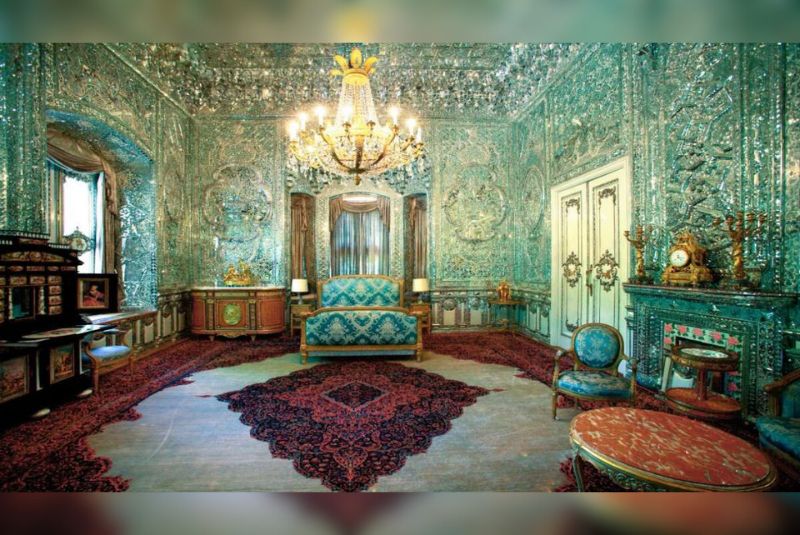
The Sa'dabad Complex is a captivating destination in Tehran that is situated in northern Tehran, with the Alborz Mountains to the north and various districts surrounding it. The complex covers 110 hectares and boasts 18 distinct buildings.It was originally built by the Qajar dynasty in the 19th century, it served as a summer retreat for the royal family due to its pleasant weather. Within the complex, you'll find a wealth of palaces, museums, and other facilities. Some notable highlights include:
- Sa'dabad Green Palace: Constructed during the Pahlavi dynasty, this palace served as the private residence and meeting place for Mohammad Reza Shah. Admire the exquisite façade and explore the palace's collection of Persian craftworks, including mirror marquetry and plasterwork.
- Mellat Palace: One of the most renowned palaces in the complex, Mellat Palace was utilized by Reza Shah Pahlavi and his son. Marvel at the captivating artworks, including figures and chinaware, and admire the European furnishings, chandeliers, and paintings. The palace also features four large mural paintings depicting famous Iranian myths.
- Mellat Museum: This museum showcases items representing the history of Iranian civilization and art, particularly from the pre-Islamic era. You'll also find artworks from African, Indian, Far Eastern, Eskimo, and Mayan cultures.
- Master Behzad Museum: Dedicated to the works of Hossein Behzad, a revolutionary Iranian painter, this museum focuses on Iranian miniatures.
- Museum of Anthropology: Discover the lifestyle and traditions of Iranians throughout history. The museum displays various objects related to irrigation, farming, fishing, hunting, clothing, lighting, and handicrafts.
- Abkar Museum: Immerse yourself in the unique paintings of Klara Abkar, a 20th-century artist known for her tranquil and spiritually inspired artworks influenced by Iranian literature and mysticism.
- Mir Emad Museum: Delve into the world of calligraphy at this museum, which showcases calligraphic writing styles from the 10th to 19th centuries. Admire the works of Mir Emad, a prominent 18th-century calligrapher.
- Water Museum: Learn about ancient and traditional methods of water supply and distribution. Explore water-related facilities such as reservoirs and traditional icehouses.
- Military Museum: Gain insights into the history of the Iranian army through displays of uniforms and weaponry from different periods, including ancient times and the Iraqi-imposed war against Iran.
- The Museum of Fine Arts: It is also known as the Tehran Museum of Fine Art. It is cherished by art enthusiasts, particularly those passionate about painting. It houses an impressive collection of Iranian paintings by renowned artists such as Sohrab Sepehri, Hossein Mahjobi, Faramarz Pil Aram, and Hossein Zende Roode. The museum also houses miniature artworks by notable Western artists from the 17th to the 20th century, including Salvador Dali and Peter Graham.
| Related: Saad Abad Historical Complex
Tehran Museum of Fine Arts History
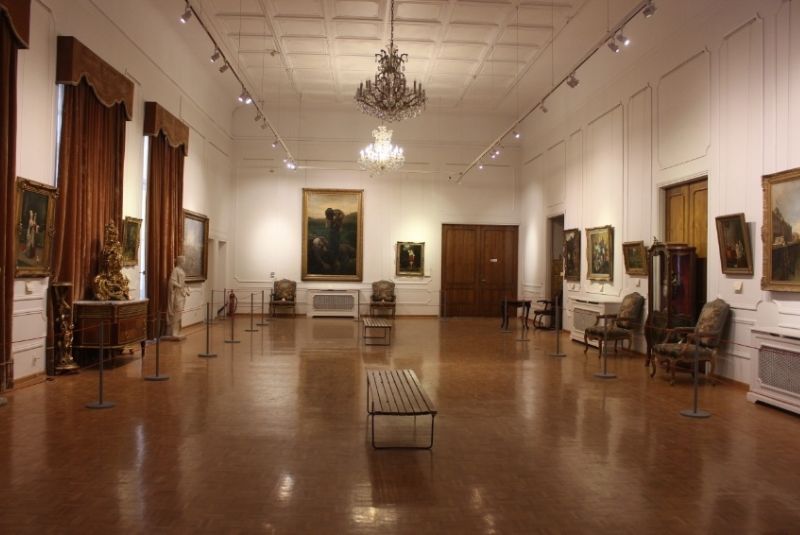
The Museum of Fine Arts, also known as the black palace has an intriguing history that spans several decades. The construction of the museum began in 1940 during the reign of Reza Shah. However, due to the end of his reign in 1941, the museum remained unfinished. The building's façade was made of black marble stones extracted from the Valiabad mine in Chalus, earning it the name "Black Palace."
After Reza Shah's ouster, the association of blackness with bad luck caused the palace to be left in isolation. In 1942-1943, reconstruction efforts were undertaken, with the black stones being replaced by other materials. However, the superstition surrounding the palace's history led to it being separated from the Saadabad complex by a wall.
In 1967, the building officially became the "Ministry of the Court," serving as the workplace for notable figures like Asadullah Alam and Abbas Hoveyda, who held ministerial positions there.
Following the outbreak of the 1979 Revolution, the entire Saadabad complex, including the Ministry of the Court building, was repurposed as a museum. The ground floor initially served as the general administration of Iranian museums, while efforts were made to reconstruct and reopen the second and third floors for the Museum of Fine Arts. In 1985, the Museum of Fine Arts finally opened its doors to the public, offering a remarkable collection of artworks and becoming a cultural landmark in Tehran.
| Related: Best Museums in Tehran - Definitive Guide
Tehran Museum of Fine Arts Artworks
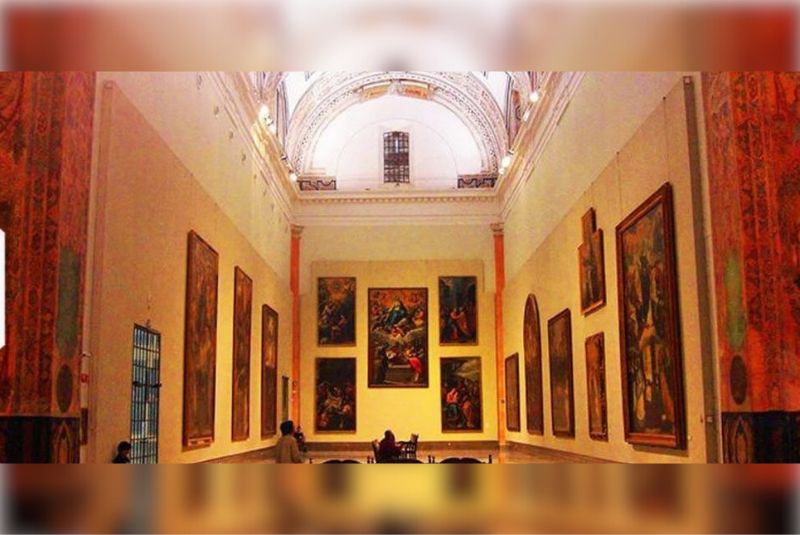
The Museum of Fine Arts houses a diverse collection of artworks spanning different periods and styles. With three floors and dedicated galleries, it offers visitors a comprehensive artistic experience.
Contemporary Iranian Painters
On the ground floor, visitors can explore the works of contemporary Iranian painters. The exhibition showcases pieces by renowned artists such as Sohrab Sepehri, Iran Darroudi, Bahman Mohasses, and Hossein Mahjoubi, among others.
| Read more: Tehran Museum of Contemporary Art
European Painters
Moving to the first floor, visitors will encounter a stunning display of European paintings dating from the 18th to the 20th centuries. The collection features notable artists like Salvador Dalí, Peter Graham, John Fredering Herring, François Mussen, Ivanovich Shishkin, and Jules Burton.
Old Iranian Painters
Continuing to the second floor, visitors will discover a remarkable collection of Iranian paintings from the Safavid to the Qajar periods.
Safavid Painting
The Safavid paintings, often characterized by oil painting and their lack of names and dates, present intriguing mysteries. Notable Safavid masters like Kamaluddin Behzad, Alireza Abbasi, Mani Shirazi, and Sultan Mohammad Mosavvar are represented in this collection. Visitors can also marvel at the unique depictions of Europeans wearing Iranian costumes in some of these paintings.
Afshariyeh Period Painting
The museum also houses a World Art Museum in the Dafineh Mansion, which showcases artworks from different periods and regions around the world. Noteworthy pieces include a captivating painting from the Afshariyeh period titled "Tajbakhshi Nader Shah." This grand painting portrays the crowning of Mughal Mohammad Shah by Nader Shah, along with the presence of Nader Shah's sons and Mirza Zaki Nadir Shah's secretary.
Paintings of the Zand Period
Visitors can also appreciate artworks from the Zand and Qajar periods. The Zand paintings often depict religious themes, including images of Imam Ali and Hossein (AS), adorned with flower and chicken motifs in the style of the Shiraz school.
Paintings of the Qajar Period
The Qajar period is highlighted by a multitude of lacquer and oil paintings, with subjects ranging from kings and princes to court dancers and musicians. Notable Qajar painters like Mehr Ali Esfahani and Rajabali Naghsh have made significant contributions to this period's artistic legacy.
Tehran Museum of Fine Arts Tickets
The ticket price of the Tehran Museum of Fine Arts is 40,000 Iranian rials per person for locals and 300,000 Iranian rials for foreigners.
Iran Museum of Fine Arts Opening Hours

During the first six months, the Tehran Museum of Fine Art is open every day from Saturday to Friday, starting at 9:00 a.m. and ending at 7:00 p.m. Ticket sales are available until 5:00 p.m.
In the second half of the year, the museum opens from Saturday to Friday, starting at 8:00 a.m. and closing at 5:00 p.m. Ticket sales are available until 3:30 p.m.
| Read more: Top 23 Museums in Iran + Photos
Tehran Museum of Fine Arts Location
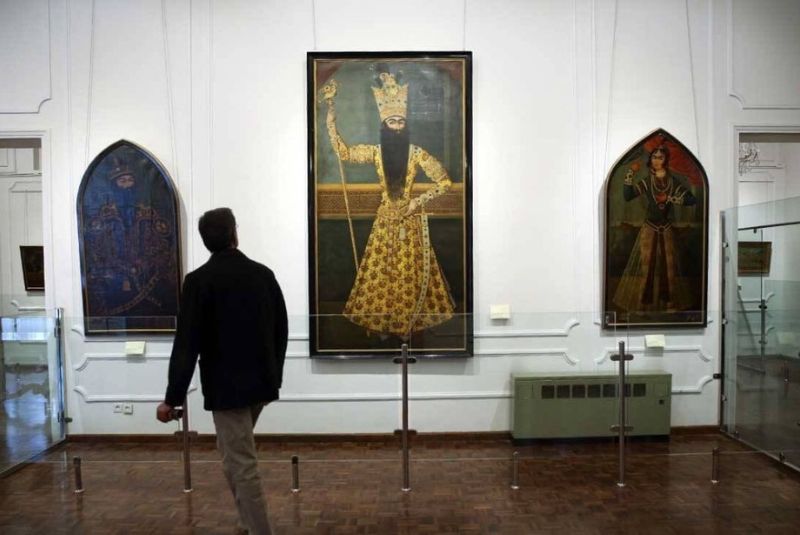
The Museum of Fine Arts is situated within the Saadabad Palace complex, located in the northern part of Tehran. The Saadabad Palace complex has two entrances, one on Zaferanieh Street and the other on Darband Street. It is located near the picturesque Alborz Mountains. It has notable attractions nearby including the Tajrish Bazaar, Darband, and other fascinating museums such as the Time Museum and Cinema Museum.
How to Get to the Tehran Museum of Fine Arts
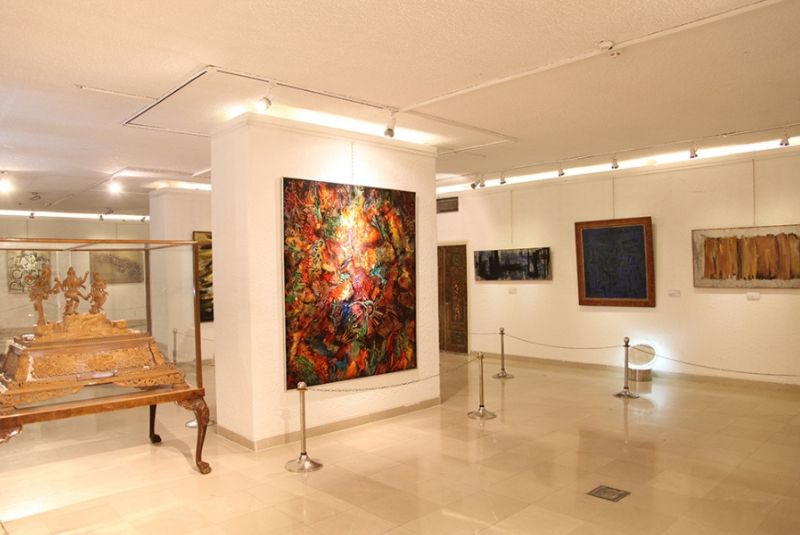
To reach the Tehran Museum of Fine Arts, you have several convenient transportation options. Whether you prefer driving, taking the bus, using the metro, or even walking, here's a guide to help you navigate your way to the museum:
By Car:
If you're driving, head towards the Sa'adabad complex located in the northern part of Tehran, near Modares Highway and Vali Asr Street. Once you reach Tajrish Square, navigate through the smaller streets until you reach the museum. Keep an eye out for signs or use GPS navigation to guide you along the way.
By Bus:
Utilizing the BRT (Bus Rapid Transit) system is an efficient way to reach the museum. Take BRT line #7, which follows Vali Asr Street, and get off at Tajrish Square. From there, head north and either walk to the Sa'adabad Complex or take a taxi for a more convenient option.
By Metro:
If you prefer the metro, the nearest station to the museum is the Tajrish metro station. This metro station is located at the northern end of the red metro line. Once you arrive at Tajrish metro station, you have the option to either walk to the palace, which takes approximately 30 minutes or take a taxi for a quicker journey.
On Foot:
For those who enjoy exploring on foot, you can embark on a pleasant walk from the Tajrish metro station to the Sa'adabad Palace. The walk will take you around 30 minutes, allowing you to enjoy the surroundings and soak in the atmosphere as you make your way to the museum.
Bottom Line
The Museum of Fine Arts in Sa'dabad Complex is a remarkable structure within the palace grounds, cherished by art enthusiasts, particularly those passionate about painting.
It houses a collection of invaluable artworks from Iran and around the globe spanning diverse periods and artistic schools. The museum proudly exhibits paintings ranging from the Safavid era to contemporary times. Additionally, European paintings from the 18th to the 20th century form a significant part of its collection. So if you are an art lover, make sure to immerse yourself in the rich artistic heritage showcased within the walls of this prestigious museum anytime you are in Tehran.
Share your story!
Comment below and let us know about your Experience.
Your story inspires others!


Comment
Leave a Comment